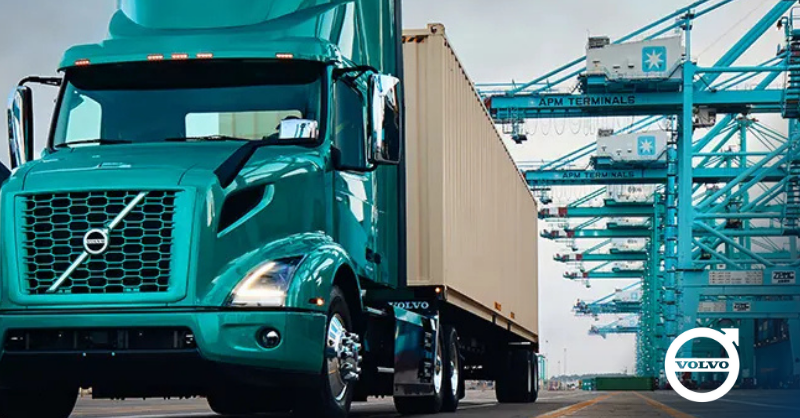What is Frictionless Selling?
Frictionless selling is a transformative approach to sales that focuses on creating a seamless, effortless buying experience for customers. This method is about streamlining the sales process to eliminate any roadblocks that might hinder a customer’s journey, making it quicker and easier for them to purchase. Frictionless selling is particularly crucial in B2B environments to enhance the efficiency of closing sales all while improving customer satisfaction.
Understanding the Concept of Frictionless Selling
Frictionless selling is not just about reducing physical friction; it’s about optimizing every aspect of the sales process to ensure it aligns with customer needs. This approach involves understanding the customer’s journey and identifying potential bottlenecks that could delay the buying process. By addressing these issues, companies can create a more fluid, intuitive interaction that facilitates easier decision-making and faster transaction times.
For companies like Vendavo specializing in strategic pricing technology, CPQ (Configure Price Quote), and guided selling software for B2B companies, frictionless selling is particularly relevant. These tools are designed to help businesses manage pricing more effectively, provide faster quotes, and issue rebates that incentivize customers, all while ensuring compliance and profitability.
Key Components of Frictionless Selling
There are several components that companies should focus on to improve their sales processes and cultivate stronger, more enduring relationships with their customers.
- Right product, right price: Offer the right product at the right price by leveraging advanced pricing software to optimize pricing strategies for each customer segment.
- Right customer, right time: Understand who the right customer is and the best time to engage them by analyzing customer data to identify buying patterns and preferences, and using analytics to determine optimal times for interactions and offers.
- Right incentives: Provide the right incentives by designing attractive and easy-to-understand rebate programs that simplify the redemption process and make customers feel valued.
- Seamless multi-channel integration: Offer a seamless experience across all sales channels, including direct sales, partners, websites, and e-commerce platforms, ensuring consistent service and product offerings.
- Customer-centric transactions: Make transactions as customer-friendly as possible by minimizing unnecessary steps and ensuring that every part of the sales process adds value to the customer.
Frictionless selling is about more than just making sales easier; it’s about creating a customer-centric approach that aligns with modern buying behaviors.
The Importance of Frictionless Selling
Implementing a frictionless selling framework is crucial for companies looking to stay competitive in today’s fast-paced business landscape. By focusing on the key advantages and benefits of this strategy, organizations can drive growth, enhance customer loyalty, and position themselves for long-term success.
Advantages for Companies
- Increased efficiency by streamlining the sales process and reducing costs associated with lengthy or complex transactions
- Improved sales performance through higher conversion rates as customers find it easier to complete purchases
- Stronger customer relationships foster loyalty and increase the likelihood of repeat business by demonstrating a commitment to customer satisfaction
Benefits for Customers
- Reduced time and effort required to make a purchase, making it easier for customers to find and acquire the products or services they need
- Enhanced trust and overall customer experience as the company prioritizes the customer’s needs and preferences throughout the sales process
- Increased likelihood of returning to companies that offer a seamless and intuitive buying journey, further strengthening the company’s position in the market
The Sales Process in a Frictionless Selling Approach
Overview of the Traditional Sales Funnel
The traditional sales funnel is a linear model that represents the customer journey from initial awareness to final purchase. This approach assumes that customers move through a series of predefined stages, intending to convert leads into paying customers. While the traditional sales funnel has been widely used, it often fails to account for the complexities of modern buying behavior and can lead to friction points that hinder the sales process.
Introduction to the Frictionless Sales Process
In contrast to the traditional sales funnel, the frictionless sales process is designed to be more adaptable and customer-centric. This approach recognizes that customers may enter and exit the sales process at different stages and that their needs and preferences may change throughout the journey. By focusing on eliminating friction points and creating a seamless experience, companies can improve the overall effectiveness of their sales efforts.
Key Stages in the Frictionless Sales Process
- Awareness: Customers become aware of the company’s products or services through various channels, such as marketing campaigns, referrals, or online searches.
- Engagement: Customers interact with the company, either through direct contact with sales representatives or by exploring the company’s website, social media, or other digital channels.
- Evaluation: Customers assess the company’s offerings and compare them to alternatives, considering factors like price, features, and customer support.
- Purchase: Customers complete the purchase process, which should be as simple and straightforward as possible, with minimal friction points.
- Post-purchase support: The company continues to support customers after the purchase, providing resources, assistance, and opportunities for feedback and engagement.
By focusing on these key stages and eliminating friction points at each step, companies can create a more efficient and effective sales process that aligns with the needs and preferences of modern customers.
Implementing Frictionless Selling Strategies
Successfully deploying a frictionless selling approach requires careful consideration of various factors, including the target audience, existing sales processes, and organizational culture. By addressing these key elements and leveraging the power of technology, companies can create a well-equipped sales team that delivers an exceptional customer experience.
Factors to Consider When Implementing Frictionless Selling
- Understand the specific needs and preferences of the target audience.
- Tailor the sales process to align with customer expectations.
- Assess current sales processes and identify areas where friction points can be eliminated or reduced.
- Build a culture that supports frictionless selling, with a focus on customer-centricity and continuous improvement.
- Ensure that the implementation of frictionless selling strategies aligns with the company’s overall business objectives and long-term vision.
The Role of Technology
Technology plays a vital role in enabling frictionless selling. By leveraging tools such as customer relationship management (CRM) systems and CPQ software, marketing automation platforms, and e-commerce solutions, companies can streamline the sales process and provide a seamless customer experience.
These technologies can help companies gather and analyze customer data, personalize interactions, and automate repetitive tasks, freeing up sales representatives to focus on building relationships and closing deals.
Building a Frictionless Sales Team
Creating a frictionless sales team requires a combination of training, coaching, and incentives. Sales representatives must be equipped with the knowledge and skills necessary to navigate the frictionless sales process effectively. This includes understanding customer needs and identifying friction points.
The Role of Customer Experience in Frictionless Selling
Customer experience is at the heart of frictionless, guided selling strategies. Understanding its impact, aligning sales efforts with expectations, and creating a customer-centric culture is vital to building lasting customer relationships and improving sales figures.
Understanding the Impact of Customer Experience on Sales
Customers who have a smooth, hassle-free interaction with a company are more likely to buy, engage in repeat business, and recommend the company to others. Conversely, a negative experience can lead to lost sales, decreased customer loyalty, and reputational damage.
Aligning Sales Efforts with Customer Expectations
To deliver a frictionless customer experience, sales efforts must be aligned with customer expectations. This means understanding what customers value most, such as speed, convenience, personalization, and quality of service, and tailoring the sales process accordingly.
Creating a Customer-Centric Sales Culture
Delivering a consistently excellent customer experience requires a company-wide commitment to customer-centricity. This translates to fostering a sales culture that prioritizes customer satisfaction, empowers sales representatives to make decisions that benefit the customer, and encourages continuous improvement based on customer feedback.
Overcoming Challenges in Frictionless Selling
While the benefits of frictionless selling are clear, implementing this approach is not without its challenges. Companies must be prepared to address common barriers and implement effective solutions to ensure a smooth and successful transition.
Common Barriers to Frictionless Selling
- Resistance to change from sales teams and organizational culture
- Lack of alignment between sales, marketing, and customer service departments
- Difficulty in gathering and analyzing customer data to identify friction points
- Outdated or inflexible technology that hinders the sales process
- Regulatory or industry-specific requirements that add complexity to the sales process
Solutions for Addressing Friction in the Sales Process
To overcome these challenges and achieve frictionless selling, companies will want to leverage the best CPQ tools for their particular needs, like solutions Vendavo offers. Vendavo’s CPQ tools and channel management software help advance the sales process by providing accurate, real-time pricing information, automating complex rebate calculations, and integrating seamlessly with existing systems. By eliminating manual processes and reducing the risk of errors, Vendavo’s solutions help companies deliver a more efficient and customer-centric sales experience.
Additionally, Vendavo’s team of experts can provide strategic guidance and support throughout the implementation process, helping companies overcome resistance to change, align departments, and build a customer-centric sales culture. By partnering with Vendavo, companies can accelerate their journey toward frictionless selling and unlock the full potential of their sales efforts. Request a demo today to get started.


